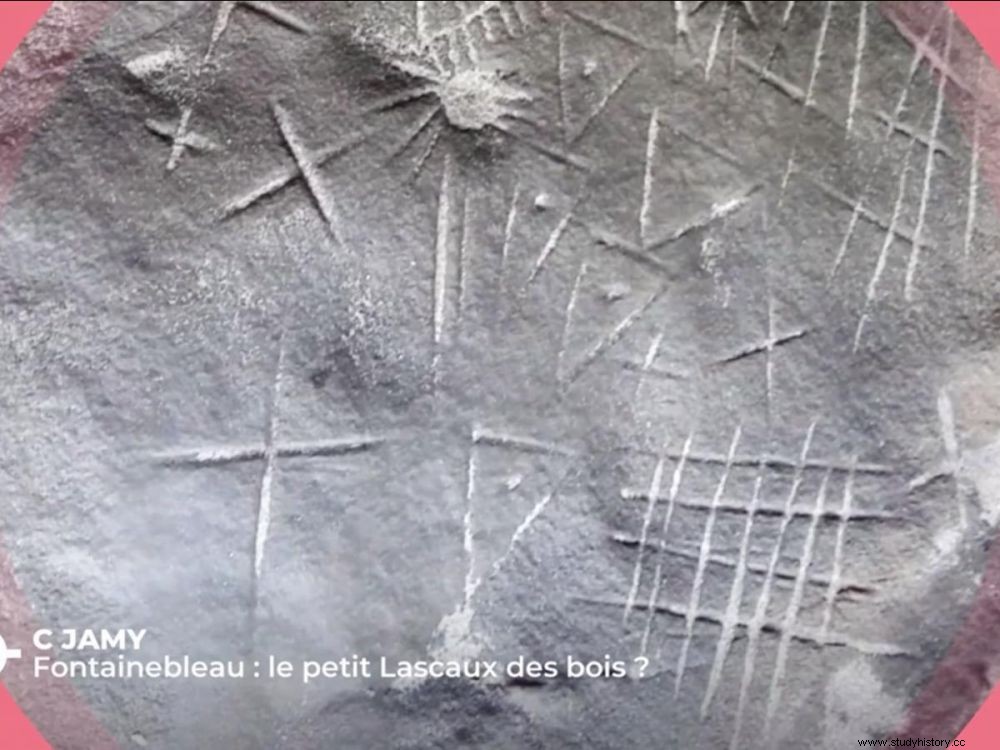In the heart of the forest massif of Fontainebleau, in Seine-et-Marne, are more than 2000 shelters engraved by our prehistoric ancestors.

During prehistory, our ancestors notably carved furrows and grids in the rocks of the forest massif of Fontainebleau.
CJAMY. Camille Gaubert's column is broadcast daily on the program "C Jamy", presented by Jamy Gourmaud from Monday to Friday at 5 p.m. on France 5.
The human history to which the forest of Fontainebleau bears witness goes back much further than one might think. Indeed, in the heart of the forest of Fontainebleau, there are more than 2000 shelters decorated by our prehistoric ancestors. Thousands of engravings adorn the rock there, made with flint by hunter-gatherers 10,000 years ago, during the Mesolithic period. We mainly see abstract patterns, such as holes or deep furrows or grids. We can sometimes recognize trees or silhouettes, forming a symbolic universe that suggests a religious art. But there is older.
Curious feminine furrows
The forest indeed hides some rarer traces left by Paleolithic humans more than 20,000 years ago. This is the era of engravings in the caves of Lascaux! In one of the shelters, there are notably two engravings of horses, arranged on either side of three deep furrows... Which do not seem to be there by chance! And for good reason:these three lines evoke a female sex, and more particularly a pelvic triangle. In a 2020 study, a French team established that most of these furrows were indeed created by humans.
Even more surprisingly, they note that modifications have also been made in the rock overhanging the furrows, so as to form a basin. According to their experiments, by filling the basin with 50 liters of water, its contents flow through the curious feminine furrows for two days... The pelvic triangle flows! The symbolism of this installation is obviously complicated to determine 20,000 years later, but the researchers believe that it had a ritual interest linked to the female sexual symbol. If you come across it by chance, don't touch it:both enthusiasts and scientists are sorry to see recent damage.
